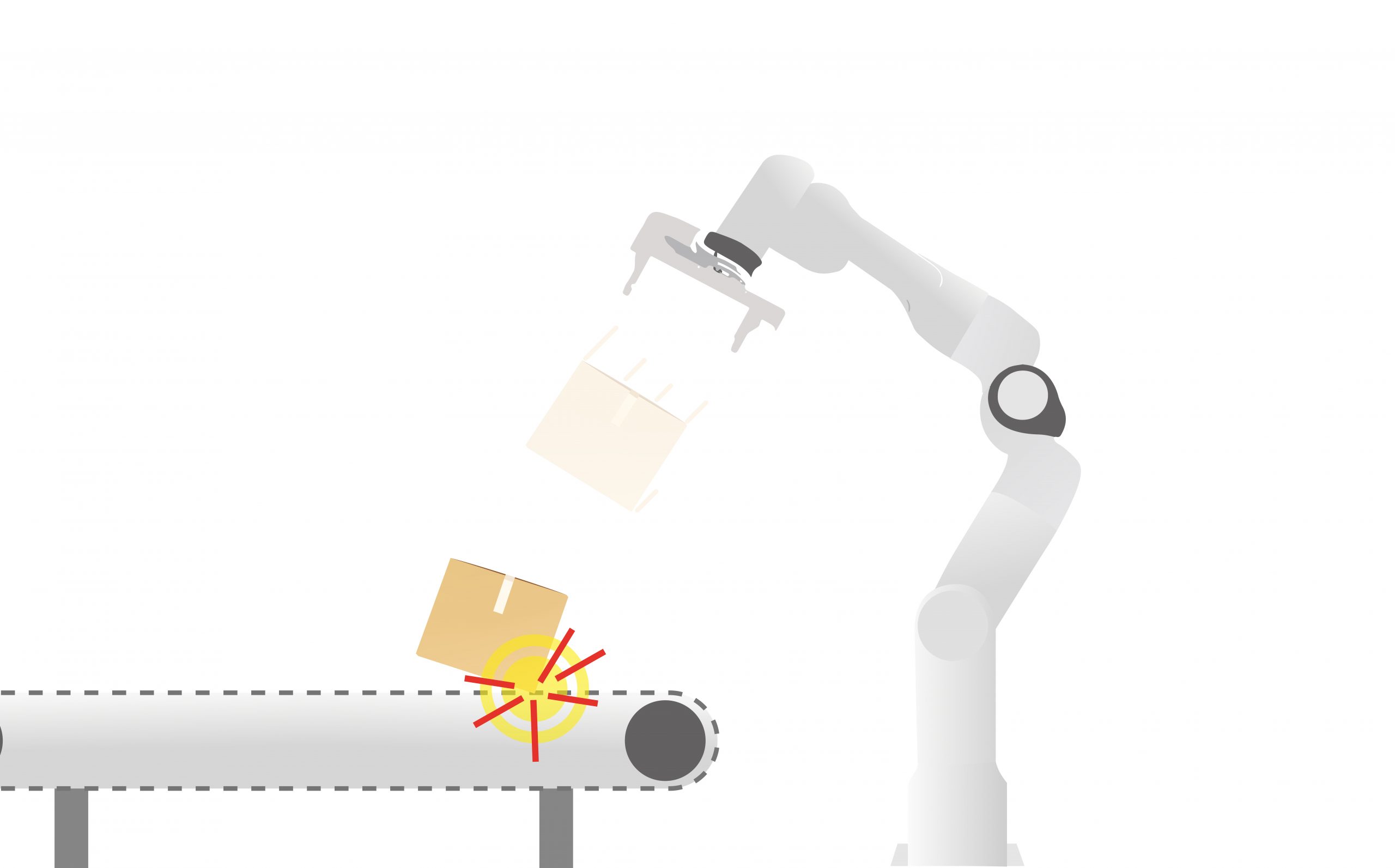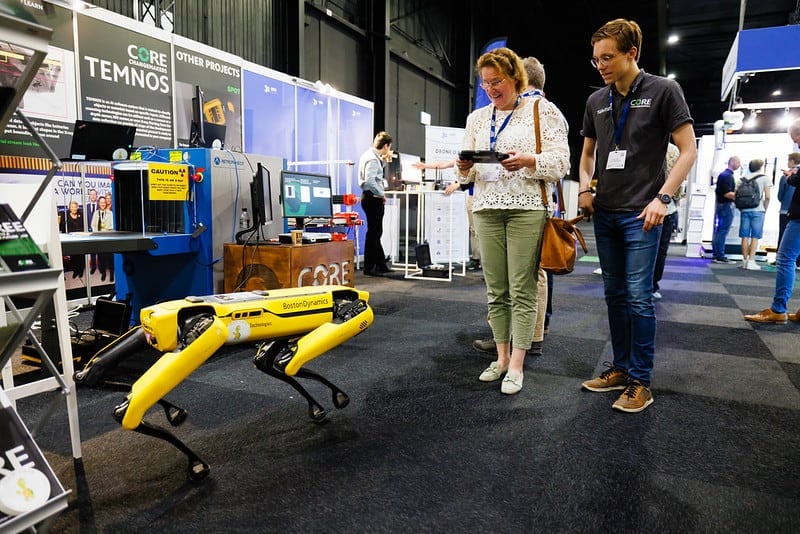
How will robots change the world? A frequently asked and as yet unanswered question. After all, we do not have a crystal ball. What we do know is that digitalization and automation have changed the world enormously in recent decades. At Eindhoven University of Technology (TU/e) in the Netherlands, the potential of smart machines in industry and daily life is being researched each and every day. Scientists immerse themselves in technology and student teams get to work on concrete solutions to social problems. This series will tell you about the latest robots, their background, and their future. Today, the second episode is about impact-aware manipulation robots.
Order today, delivered tomorrow. We’re becoming accustomed to how packages are delivered so quickly to our homes. Yet it is a logistical challenge that is becoming increasingly complex owing to growing demand. An order picking robot is one solution. There are already robotic arms that can move things. But these are still limited in what they can do. They perform one movement or a set of movements in the same way over and over again. In order to save more time, current robot arms need to be significantly improved. “Robots must have more human skills, such as judgment and perception,” says Alessandro Saccon, assistant professor in the Faculty of Mechanical Engineering at the TU/e.
Throwing
“We humans often do several things at the same time. When we’re in a hurry, for example, we toss a box on the table as we pass by. We estimate how big and heavy it is and, based on that, we know how hard we have to throw it in order for it to more or less land on the table,” Saccon explains. The researcher also wants to teach this skill to robots. “For example, a robot can throw objects on a conveyor belt instead of laying them down very carefully. It can also decide for itself which objects to handle and how to handle them. That saves five to ten percent in time when processing orders,” says Saccon. In robotics, lifting, moving, pushing, or sliding objects is also referred to as manipulation.
For instance, a robot that is more aware of its environment and the materials it works with is also capable of packing packages more efficiently. “People are able to cram in a bit here and there to make sure that something fits in a particular box. Robots can’t do that sort of thing at the moment,” Saccon explains.
Sensors and infrared
In order to teach robots new skills, the researchers must first carefully monitor what actually happens. They use a motion registration system to do this. An accurate infrared camera. “We then place reflective dots on objects and on the robot. This allows us to see exactly how everything moves and how the robot handles it,” he goes on to explain. “We make models of the collected data. The robot can learn how to handle certain objects on the basis of these models. This allows it to work ever more efficiently.” The robot also uses various sensors to measure e.g. how heavy a package is. Saccon wants to keep a close eye on the robots with the help of the models. “If the robot does something else than what’s expected, you obviously want to quickly correct that. Especially if it might have negative consequences.”
The robot can also learn to correct itself via these models and experiences. “As a human, you sometimes make an incorrect estimate. Imagine you are running and suddenly there is ice on the road. Then you feel your foot slide away so you adjust your posture. You adapt your expectations of the surroundings and readjust your posture accordingly,” the researcher continues. “That’s what we want to teach the robot.” Saccon calls this Impact-aware manipulation, the robot has to learn to understand and predict what happens when it comes into contact with a dynamic environment.
Three scenarios
The new technologies add another dimension to the present-day robotic arms. At the beginning of this year, a European research project, I.AM, was launched in order to develop this further. Several universities and companies from Germany, Switzerland, Sweden and France are all working on this project together. “All parties have different fields of expertise for contributing to this new robot,” notes Saccon. Together with Vanderlande and the other project partners, the researchers have set out three scenarios for validating their technology. “First, we want to show that a robot can throw objects onto a conveyor belt. This saves time in the processing,” he first says.
“Then we want to see if the robot is able to fill boxes with items. Vanderlande and Smart Robotics, both partners in the European project, are working on developing software for this purpose. Putting orders together is one of the applications in logistics where this robot could be of use,” he goes on. In the third scenario, the researchers are working on another application. “In this case, we want to see how we can quickly remove boxes from a pallet. Large machines are now being used to do this and people still play a major role in this process. It would be easier if two smaller robots could do this.”

Finding more applications
The European researchers want to use the results of the project to create a roadmap for introducing the technology to industry. “Parts of the software for the new robots can already be integrated into existing systems within a few years,” Saccon states. “This will allow us to expand that even further.” According to him, this technology is still a new field of research. “A lot of research is already being carried out on the motion of robots when they grasp an object gently, without hitting it, the so called static manipulation. Not much is known about dynamic manipulation, when robots impact objects on purpose. I expect this to rapidly increase over the coming years,” he says. “We are bound to discover more and more areas of application.”
Jobs?
Are robots going to steal jobs across a range of sectors? This should not be be too bad, according to Saccon. “We see that there is a great demand for people in logistics, such as order processors. But there aren’t a lot of people who are willing to do this work. This only increases the pressure on existing employees. A robot would then be a solution,” he adds. The robot can also make people’s workload easier. “At the airport, for example, people have to do a lot of heavy and repetitive work at the baggage carousel. A robot would then be able to help. Consequently, people could do other, more varied work.”
Saccon hopes that this technology will make a difference to industry and society. “It’s great to put a technology from the university into practice. We can help people with it and ensure economic progress as well.”
Are you curious about the other special robots at the TU/e High Tech System Center? Read the first episode here.







